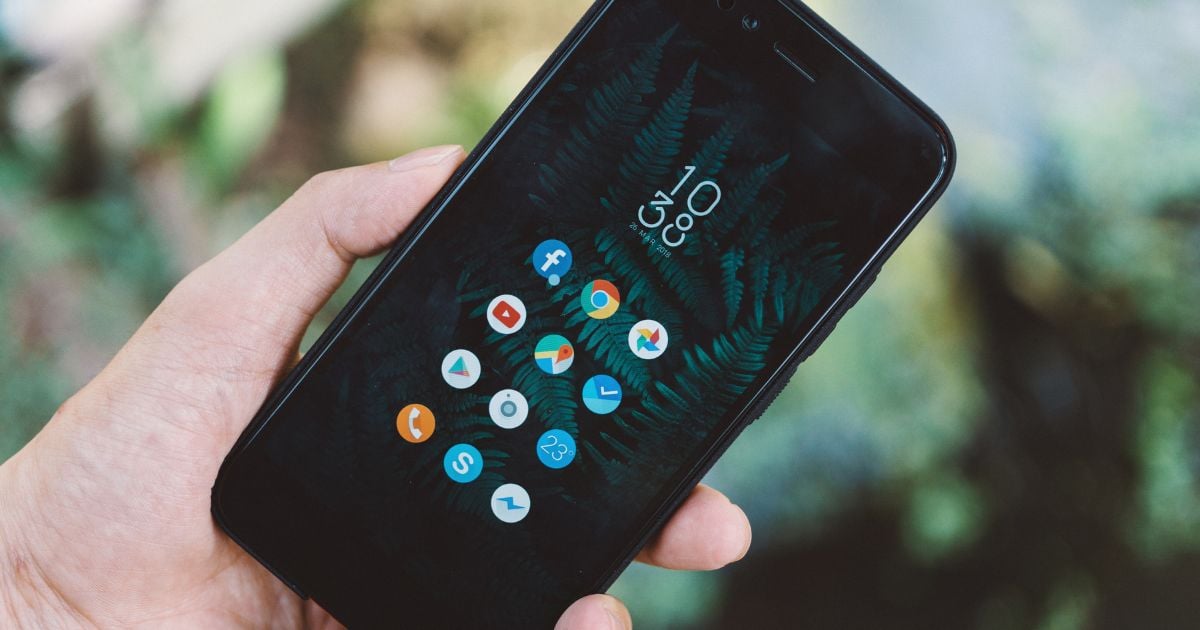How Mobile Apps Are Changing the Banking Industry

In the first quarter of 2023 alone, over 63% of bank account holders processed banking matters on their smartphones or tablets. As of 2022, 78% of adults in the U.S. preferred to bank via a mobile app or website.
The banking landscape is changing, and as the number of unique mobile users continues to grow worldwide, an intuitive, user-friendly mobile banking application becomes a necessary consumer touchpoint for banks that aim to increase their market share. That's why it's high time to closely examine the top mobile banking applications. They're changing the game, redefining how we interact with our money, and integrating with our lives more than ever.
Why do people use mobile banking apps?
Nearly half of U.S. adults use mobile banking apps and digital wallets to split bills and make transfers. Additionally, mobile banking apps can be leveraged for contactless cash withdrawals, transaction confirmation, virtual card payments, and setting up financial goals.
Users primarily choose mobile banking applications as their main bank interface as it offers greater options for personalization. According to Accenture’s study, 80% of mobile banking users would be willing to share data in return for personalized and convenient services.
From a user interface and accessibility standpoint, it's much easier and often more secure to transfer cash or pay a bill through a dedicated app rather than a website.
The mobile revolution in banking has also given rise to new competitors in the centuries-old banking industry. Fintech companies like Revolut, Monese, and N26 prioritize excellent mobile experiences as their primary focus, emphasizing account creation, management, and in-app money transfers.
For instance, Revolut's popularity can be attributed mainly to its capability to provide a mode of payment for international travelers who either lack local currency or prefer to avoid the high exchange fees associated with other banks.
Mobile banking apps no longer need to rely solely on centuries-old institutions and their subsidiaries; instead, new fintech solutions redefine mobile banking by creating integrated, streamlined platforms that promote ease of payment, personalization, and accessible offerings.
Characteristics of an industry-changing application
Industry-changing applications are characterized by their ability to enhance the customer experience, process frictionless transactions, and uphold high-security standards. These defining features will also serve as our criteria for evaluating the mobile app examples later.
Customer Experience/UX UI
First, an industry-leading banking application should have an intuitive user interface that creates a smooth user experience. A well-designed application can significantly enhance the user experience and improve the likelihood of a user becoming a loyal customer.
An industry statistics report highlights that poor aesthetics is why 52% of existing userswon’t return to a website.
Frictionless transactions and non-monetary features
Frictionless transactions and non-monetary services are facets of a good user experience.
Great UX/UI is exemplified by the successful integration of app characteristics such as one-click payments, quick transfers, and the ability to update users on current transactions. This ensures that customers are always informed about their financial activities while making transactions.
Frictionless transactions are upheld by services such as identification confirmation, biometric scanning, face recognition, secure document signing, and virtual ledgers.
Revenue-generating services
Apart from the cashless payments that these applications allow, an industry-defining mobile application should allow users to reach multiple services that have little to do with traditional banking: including but not limited to coupons, discounts, car rentals, lending services, etc.
These value-added services can generate additional revenue for an institution while improving the customer’s overall experience and engagement with the application. Examples of these promotions include cash rebates, rewards systems, and loyalty points. Gamifying rewards systems improve loyalty and engagement.
Research has found that up to90% of users find gamified solutions effective, enhancing loyalty and engagement. CashbackCashback bonuses for gassing up with a partner or product rewards for successful app referrals are all examples of gamified services that create win-win scenarios for both the business and the customer.
AI for tailored insights
Moving forward, we foresee industry-defining banking apps using AI and algorithms to curate consumer analytics and tailor insights. The mobile environment is one of the best business cases for leveraging machine learning to improve the user experience.
AI and machine learning models can be used to learn from users’ individual habits and activities. Apps powered with machine learning can analyze and predict user activity and suggest actions that similar users do. These powerful models can detect emerging trends before they become apparent.
Customer habits and behaviors are a potent data source for organizations, and the information gathered from these customers can massively help with product development. As businesses understand their customers, the result is a streamlined customer experience.
High security standards
Mobile apps have revolutionized the banking industry by transforming the way banking services are delivered and accessed.
One significant aspect of this transformation is the emphasis on high security standards to protect sensitive financial information and ensure a safe user experience. Here are some ways mobile apps are changing banking services with a focus on maintaining high security standards:
Latest biometric identification methods
Mobile banking apps are integrating cutting-edge biometric identification methods, such as fingerprint recognition, facial recognition, voice recognition, and iris scanning.
These biometric features add an extra layer of security by using unique physiological or behavioral characteristics of the user to verify their identity. Biometrics offer a more secure and convenient alternative to traditional password-based authentication, reducing the risk of unauthorized access to the app or account.
Profiling user phone
Mobile apps can profile the user's phone to create a unique device fingerprint. This includes gathering information about the device's hardware, software, and configurations.
By analyzing this data, the app can detect any inconsistencies or changes in the device, which can help identify and prevent fraudulent access attempts. Profiling the user's phone enhances security by ensuring that the app is accessed from the same registered device.
Multi-factor authentication (MFA)
Mobile banking apps often employ multi-factor authentication, requiring users to provide multiple forms of identification to access their accounts. MFA typically combines something the user knows such as password, something the user has, for example, a registered device, and the user's characteristic (biometric data).
This layered approach makes it significantly more difficult for unauthorized individuals to gain access to the app or perform fraudulent transactions.
Transaction confirmation via app
Mobile banking apps offer real-time transaction notifications and require users to confirm or authorize transactions directly from the app. This extra step ensures that the account holder is aware of all account activity and can quickly identify and report any unauthorized transactions.
The reverse communication
This refers to the ability of mobile banking apps to enable two-way communication between customers and their banks or financial institutions.
The features such as chat and video chat, allow customers to communicate with customer support representatives or banking personnel directly from within the mobile app. This enables customers to seek assistance, ask questions, resolve issues, or conduct transactions with the help of real-time communication.
Additionally, the capability to upload necessary documents through the app further facilitates communication between the customer and the bank. Users can securely share documents required for account verification, loan applications, or other processes directly through the mobile app, streamlining the overall customer experience.
Mobile apps that are changing the banking industry
We’ve established the factors that have allowed mobile apps to reshape the banking industry. Now, here are these features in action.
VISA Mobile
VISA Mobile is an application streamlining confirmation of online payments.
Users benefit from a convenient, secure, and widely accepted banking solution. Visa’s mobile payments are secured by their Token Service, a foundational platform that provides businesses with more secure digital payment experiences.
Not only does this reduce the possibility of fraud by reducing the amount of data transferred, but it also creates faster payment frameworks and brings trust to real-time payment innovations.
FairMoney
FairMoney is a Microfinance solution based out of Nigeria, Africa. The company helps everyday individuals access financial tools that give them control over their life and finances.
FairMoney’s key features were born out of their extreme focus on providing the best banking solution for Nigerians. The app provides high-yield savings accounts, quick personal and business loans, and a modern banking PoS that supports cashback rewards and instant settlements for small businesses.
Careem
Careem Pay is a payments app offered by Careem, the Middle East’s everyday super app offering delivery, mass transportation, and payment services. Careem Pay provides financial services such as peer-to-peer transfers, a digital wallet, merchant-focused services, and bill payment capabilities.
Careem Pay is redefining the banking industry by focusing on the customer experience. New features were added, and consumer journeys were simplified as Careem aims to create an intuitive payment platform based on users’ ongoing activity and feedback.
Capital One
Capital One’s mobile banking application offers an all-in-one service for customers to manage their credit cards, bank accounts, and loans. Users can check their account balances, pay bills, view payment activity, review transaction details and set up personalized notifications to keep up to day with what’s happening in their accounts.
Capital One’s use of Machine Learning models and algorithms not only improves customer experiences by identifying friction-creating touchpoints in the payments sector, but they’ve also improved security and protection by leveraging machine learning to read the DOM and pixel coordinates for Virtual Card Numbers and identifying trends in suspicious account activity for more accurate support and fraud detection.
ING
ING is a Dutch multinational institution with roots in banking, investments, life insurance, and retirement services.
A key characteristic of their services is the fact that they operate entirely remotely. The lack of physical offices may make it a little harder for customers to receive support, but the low overhead also makes it easier for the bank to reduce their fees, offer rebates, and focus on creating a streamlined Internet banking experience.
Meeting the customer expectations
Bank customers expect a dedicated, secure, personalized, and well-designed application.
Consumers have grown accustomed to the conveniences of modern life brought about by a smartphone.
Online shopping, same-day delivery, thousands of hours of content, and all the world’s knowledge right at their fingertips have made accessibility and reliability a basic expectation from their service providers.
Combining rich and useful features with a streamlined customer journey and high-security standards will help banks and fintech companies retain their current customers and win over new ones.







